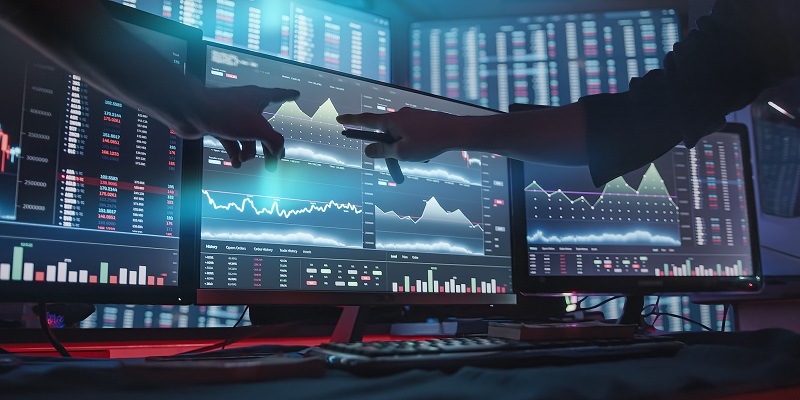Editor’s note: Yesterday, RiskHedge Director of Trading Justin Spittler revealed why he’s shutting down all his newsletters… and what he’s doing next.
Today, Justin shows how to reliably make money in today’s volatile and confusing markets…
STEPHEN: Justin, the markets continue to bounce around.
Folks are confused and frustrated.
How are you trading in the middle of all the chaos?
Justin: I haven’t changed a thing.
I’m following my process like I always do.
Not to oversimplify things, but the “news” is the main source of confusion for most folks. The news networks have various priorities: to scare you, to entertain you… whatever it takes to keep you watching.
As a trader, I have only one priority. I wake up every morning thinking: How do I profit this week?
When you tune out the junk and focus on the goal… you’ll find markets make a lot more sense.
STEPHEN: Give us an example of trading with your process.
Justin: The most important thing in trading is not to lose money. So, let’s look at the unluckiest trade I was part of in the last year. I usually trade stocks, but I’ll trade anything if there’s opportunity. I was trading INJ, which is a crypto.
I had recommended INJ in my newsletter (which I am shutting down). The trade was going great. We were up 50% in three weeks.
Then I wake up one morning to the FTX collapse.
Cryptos melt down. I cut INJ quickly for a small 14% loss.
Funny enough… INJ bounced back to become one of the best-performing cryptos and is now up over 500% since then! Without me aboard, unfortunately.
STEPHEN: Ouch. That was almost an incredible trade.
Justin: Yeah, but I don’t think like that. There’s always another trade. It was the right move to cut it. The outcome was “ouch.” But the process was correct.
STEPHEN: You clearly place a huge focus on “process.”
Justin: My process positively exposes me to luck—which is what trading is all about at the end of the day.
Let me give you another example—the “unluckiest” entry into a trade I’ve ever had.
I recommended telehealth stock Livongo (LVGO) on February 19, 2020. That was the exact day the US stock market peaked before crashing 34% during COVID.
It was quite literally the worst possible day to recommend a stock since 2008.
STEPHEN: That was a scary time… I remember it well.
Justin: Although LVGO pulled back in the 34% crash, it didn’t breach my risk levels. So we stuck with the process and held on. Long story short, it quickly bounced and rallied and was eventually acquired by Teladoc (TDOC), giving us something like a 250% profit.
Not to go on and on with war stories… but probably the craziest trade I’ve recommended was VTIQ. My readers collected a 395% gain in three months on a company that turned out to be fraudulently marketing its electric trucks.
That’s the beauty of trading with a process… you can get in, get out, and what happens to the stock afterward is not your problem.
STEPHEN: So, elaborate on why you’re shutting down your newsletters.
Justin: The newsletter model is inadequate for delivering truly useful—by that, I mean maximally profitable—trading guidance.
Don’t get me wrong: I love newsletters. I’ve been around them for more than a decade and I’ve probably written over 500 issues myself. But they are really designed for longer-term investing opportunities.
My new project allows me, for the first time, to be a constant source of guidance for my subscribers. That’s important because, at their worst, newsletters leave readers in the dark for weeks or even months at a time.
STEPHEN: You’re talking about accountability.
Justin: Exactly. Process… accountability… call it what you want. It’s about giving folks opportunities and guidance they couldn’t get otherwise. As one example, beta testers in my new project will be able to access a whole new category of trades that tap into the fractal nature of 80/20.
STEPHEN: Fractal... can you explain that?
Justin: Yesterday, we saw how 20% of your trades produce 80% of your profits, right? But that’s just the beginning.
When you drill down further, 20% of that 20% (or 4%) are your trades that can really move the needle. Trades that can double, even triple your money.
And 20% of that 4%—or 0.8%—are the trades that can make your whole year, or even your whole decade.
I say this from experience. I’ve made up to 69X my money on a single trade. But I won’t even talk about these unless I’m in a long-form conversation like this one, where I can put proper context around them. These trades represent a tiny slice of my overall trades—but an outsized share of my profits.
STEPHEN: So what is your new project exactly?
Justin: It’s a private online group for folks who are NOT professional investors or traders.
Most of our readers are not investment professionals. They’re doctors, lawyers, coders, entrepreneurs, teachers. Often, they’re folks who’ve found success in other walks of life and who are now interested in trading stocks, but don’t have hours and hours to dedicate to it.
For folks who would like to discover more—we’re taking a small number of “beta testers” inside my new group.
Can we put a link in here for readers to learn more?
STEPHEN: Sure—go here to get the details on Justin’s new trading room.
Anything else readers should know?
Justin: Only that there are a very limited number of beta tester spots available, due to the nature of the project. So, if it’s something you’re interested in, please reach out today.
STEPHEN: Thanks Justin.
Stephen McBride
Chief Analyst, RiskHedge



